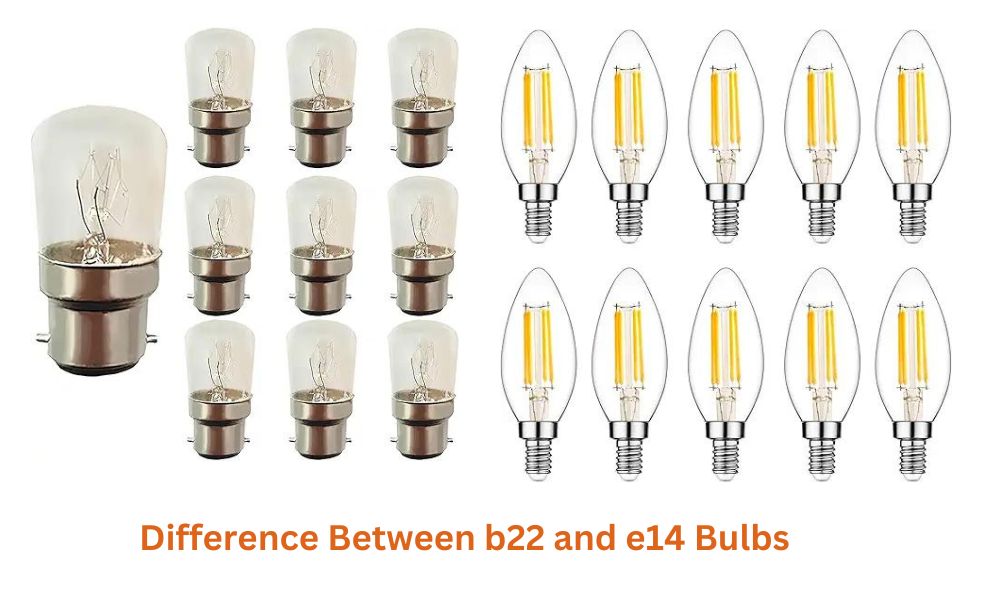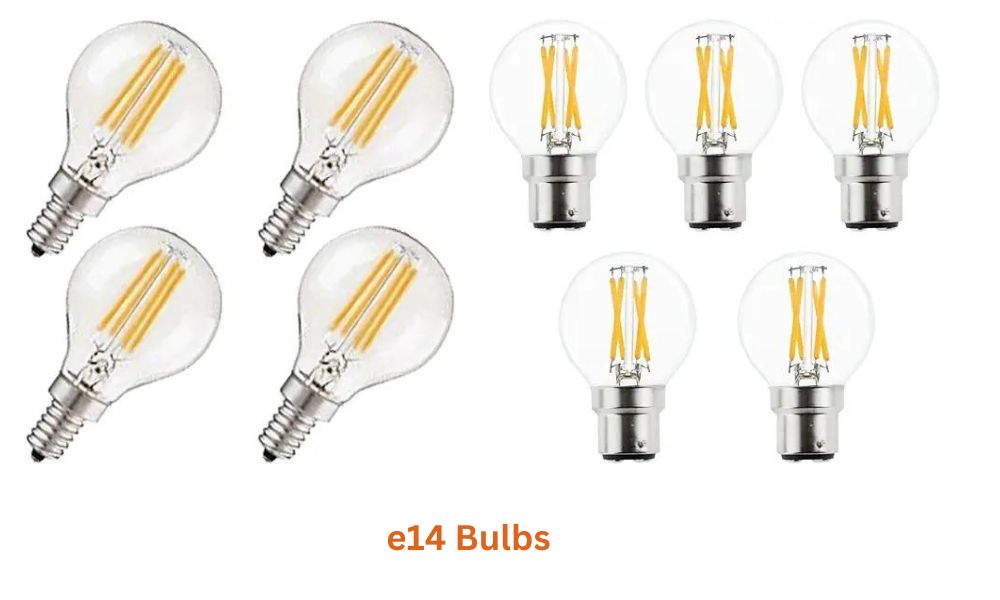When it comes to choosing the right light bulb, the options can seem endless. You’re not the only one who has ever pondered the distinctions between B22, E27, and E14 bulbs. These terms refer to specific types of bulb bases, each suited to different lighting needs. In this article, we’ll explore the differences between B22, E27, and E14 bases, helping you determine which one best suits your needs.

Knowing the Differences Between B22, E27, and E14 Bulb Base Types
Before diving into comparisons like “B22 vs E27: Which is Better?” or “E14 vs E27 Differences,” it’s essential to understand what these terms mean:
- B22 Bulb: Known as the bayonet mount, the B22 base is widely used in the UK, Australia, and other regions. The base is 22mm in diameter, hence the name B22. This type is common in ceiling fixtures and traditional light fittings.
- E27 Bulb: An Edison screw base, the E27 is 27mm in diameter. It’s commonly found in Europe and the USA, often used in table lamps and larger ceiling lights. The E27 bulb base offers a secure, twist-in design.
- E14 Bulb: Also an Edison screw type but smaller, the E14 base has a diameter of 14mm. This size is typically used in smaller fixtures like chandeliers and decorative lamps.
Each base type fits specific fixtures, making it crucial to understand the differences when replacing or choosing a bulb.
B22 vs E27: Which is Better?
One of the most common comparisons people make is between E27 and B22 . So, what sets these two apart?
- Size Difference: E27 bulbs have a slightly larger base (27mm) compared to the B22 base (22mm), making them distinct and non-interchangeable without an adapter.
- Mounting Type: E27 uses a screw mount, meaning it twists into the socket, while B22 bulbs use a bayonet mount that requires a push-and-twist action.
- Applications: E27 bulbs are ideal for fixtures in living rooms, table lamps, and pendant lights, whereas B22 bulbs are commonly found in ceiling fixtures, especially in the UK and Australia.
In general, deciding between B22 vs E27 bulbs comes down to your fixture’s compatibility and personal preference. Both types are widely available, but B22 remains more common in the UK, while E27 is popular in Europe and the USA.

2.E14 vs E27: What’s the Difference?
The E14 vs E27 comparison is another common question. Although both use the Edison screw design, they are not the same.
- Size Difference: The E14 base is smaller, measuring 14mm, while the E27 is larger at 27mm. This size difference means they fit different fixtures and are not interchangeable without an adapter.
- Usage: E27 bulbs are often found in larger fixtures like ceiling lights and standard lamps. E14 bulbs, due to their smaller size, are commonly used in chandeliers, night lights, and decorative fixtures.
When choosing between E14 vs E27 bulbs, consider the size and style of your fixture. Smaller lamps usually require E14 bulbs, while larger fixtures are better suited to E27 bulbs.
3. Are E14 and B22 the Same?
E14 vs B22 is yet another common comparison, and these two bases are also quite different:
- Size and Design: The B22 base measures 22mm, while the E14 is smaller at 14mm. Additionally, B22 uses a bayonet-style fitting, and E14 uses an Edison screw. This makes them incompatible without an adapter.
- Common Uses: B22 bulbs are typically used in ceiling fixtures, while E14 bulbs are found in decorative or smaller fixtures like chandeliers.
Understanding the difference between E14 and B22 can be useful when selecting bulbs for various lighting setups.

Can E27 Fit E14?
Many people wonder if E27 and E14 are interchangeable. Unfortunately, they are not due to size and design differences. E27 bulbs have a larger 27mm base, while E14 bulbs have a smaller 14mm base. Adapters can sometimes allow an E27 bulb to fit into an E14 socket or vice versa, but this should only be done if safe for your fixture and setup.
Choosing Between E14, E27, and B22 Bulbs
Choosing the right bulb size between E14, E27, and B22 bulbs, it’s essential to consider your fixture requirements, as well as how each base type affects lighting and appearance:
- Check the Fixture: Most fixtures specify the required base size. Ensure you know if your fixture is designed for B22, E27, or E14 bulbs.
- Consider the Size: Smaller fixtures like chandeliers often need E14 bulbs, while larger lamps may require E27 bulbs. Traditional UK ceiling lights often use B22 bulbs.
- Think About the Look: E14 bulbs often have a more delicate appearance, making them suitable for decorative light fixtures, while E27 and B22 bulbs work well in standard room lighting.
Conclusion: Making the Right Choice
Understanding the differences between B22, E27, and E14 bulb bases can make all the difference when selecting a light bulb. While they may seem similar, each base type has unique features that make it suitable for specific fixtures.
By checking your fixture type and knowing the difference between E14 and E27 bulbs or B22 and E27, you can ensure that you select the best bulb for your needs. Whether you need a B22 bulb for a ceiling fixture or an E14 for a chandelier, understanding these differences can guide you to the best lighting choice.
Happy lighting!
Related articles:
- What is the difference between e27 and e14 bulbs
- Difference between b22 and e27 bulb
- Difference between ac and dc led bulb
Hi, I’m Malik Suhail—an SEO expert, web designer, and passionate blogger with 2 years of experience. I specialize in crafting content that is not only informative but also tailored to meet the needs of my readers.
I write about diverse topics, always striving to simplify complex ideas and provide valuable insights that resonate with my audience. Whether it’s about SEO strategies, web design trends, or blogging tips, I am committed to delivering well-researched, practical, and easy-to-understand information.
My mission is to help readers navigate the digital world with confidence and clarity. I believe in adding value through authentic content that inspires action and delivers results.


